Shadoof-3D Explanation
Have you ever wondered how ancient farmers managed to grow crops without modern machines? Long before electric pumps or pipes existed, people found clever ways to bring water to their dry fields.
One of the smartest and oldest inventions they used is called the Shadoof.
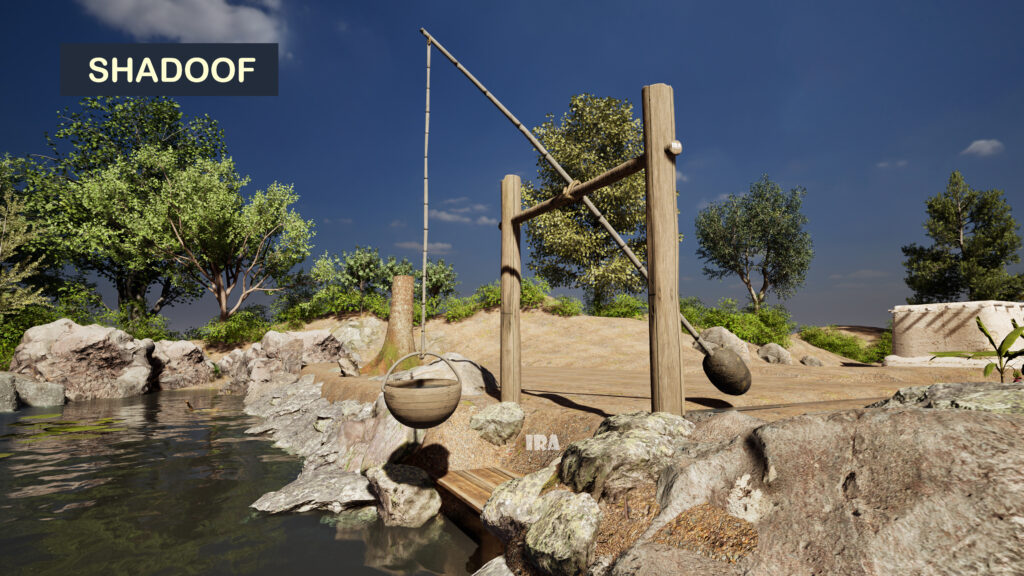
What Exactly Is a Shadoof?
A Shadoof (also spelled shaduf) is a simple hand-operated device used to lift water from rivers or wells. It was first used in Ancient Egypt and Mesopotamia, over 4,000 years ago!
Think of it like a seesaw made for lifting water. It helped farmers irrigate their crops even in very dry regions — and believe it or not, some people in rural areas still use versions of the Shadoof today.
How Does the Shadoof Work?
See it in action-In 3D!
The design of the Shadoof is beautifully simple:
A long wooden pole is balanced on a vertical support frame.
On one end, there’s a bucket to collect water.
On the other end, a counterweight (like a stone or mud block) helps balance the load.
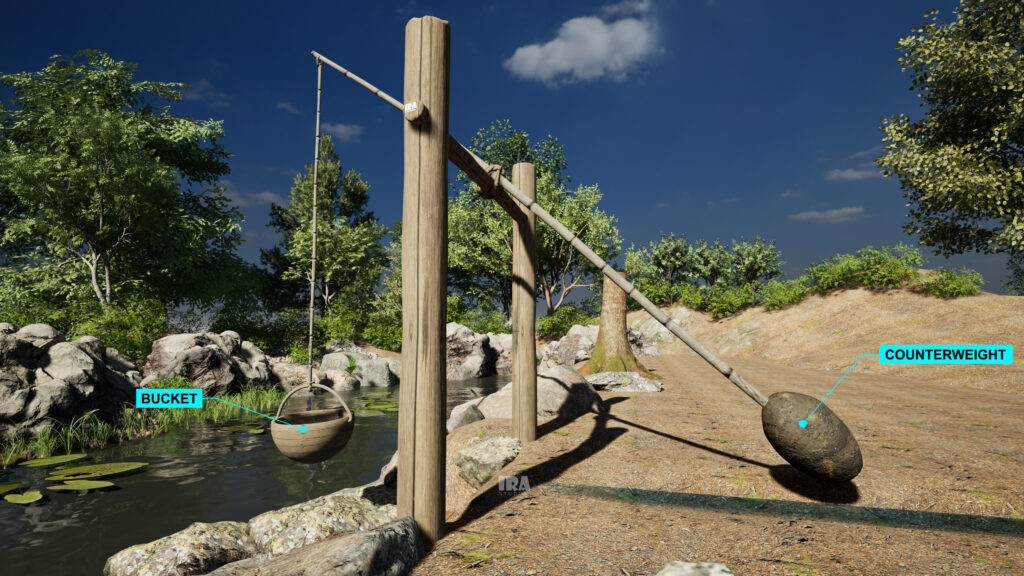
Here’s how it works:
The farmer pulls the bucket down into the water source (usually a river or well).
The bucket fills with water.
The counterweight helps lift the bucket back up with much less effort.
The farmer then swings the bucket and pours the water into a canal or field.
It uses basic principles of leverage and balance — a great example of early engineering.
Multi-Level Shadoof: Ancient Water-Lifting Innovation
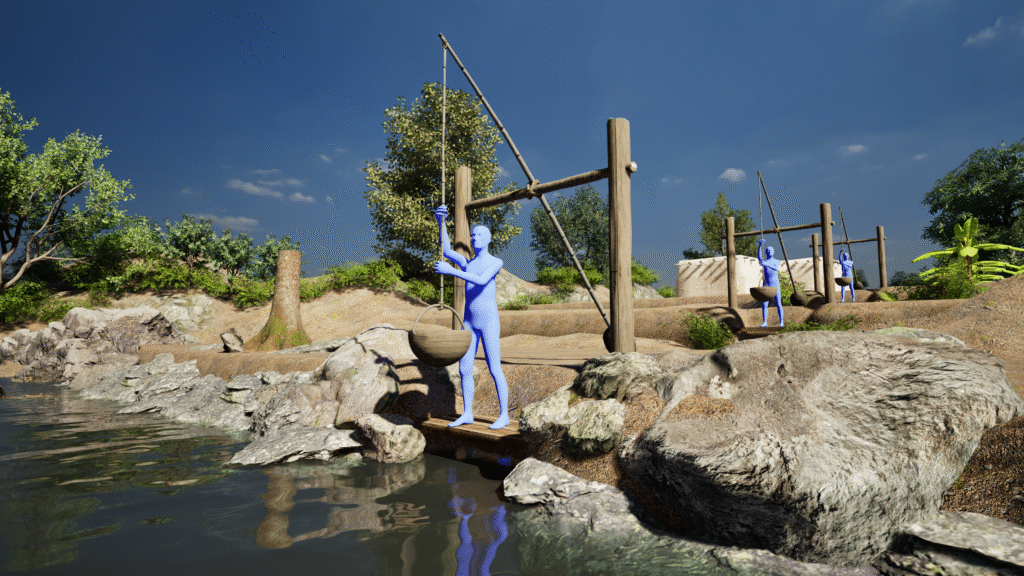
While a single Shadoof was perfect for lifting water from rivers or canals, ancient engineers took it a step further with the invention of the multi-level Shadoof.
This system used two or more Shadoofs placed at different heights, allowing water to be lifted across multiple levels. Here’s how it worked:
The first Shadoof pulls water from a river or lower source.
That water is emptied into a small basin or trough.
A second Shadoof, positioned higher, lifts it again.
This process continues until the water reaches the desired elevation—often to irrigate farms located on higher ground.
This technique was especially useful in terraced farming or areas with uneven terrain, where a single Shadoof couldn’t lift water high enough.
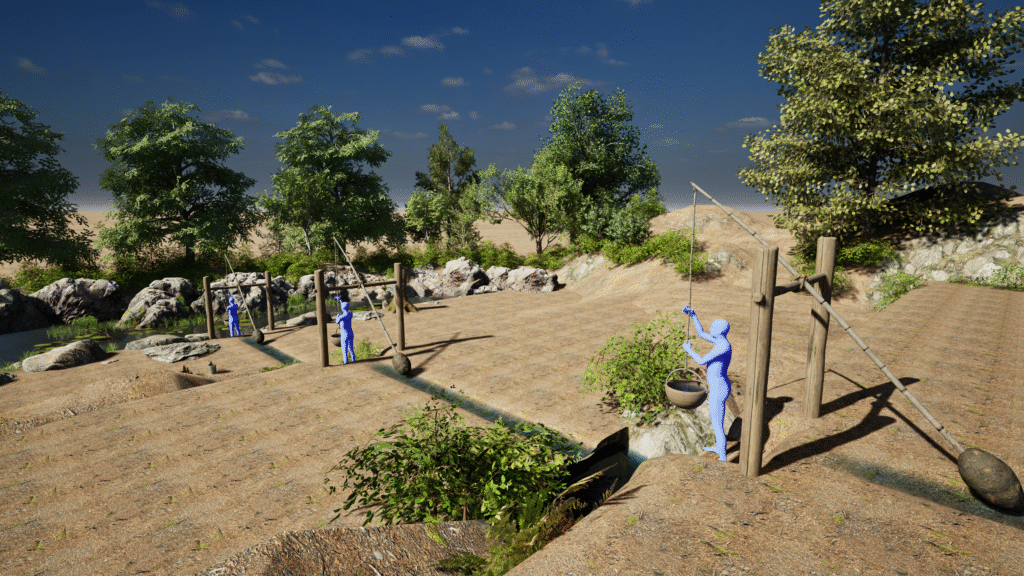
Why It Mattered
Allowed irrigation in hilly or stepped farmlands
Expanded farming reach far from direct water sources
Worked without machines—only human effort and clever design
The multi-level Shadoof stands as a powerful example of how early civilizations like Egypt and Mesopotamia used smart solutions to solve real-world farming challenges.
Where Was the Shadoof Used?
The Shadoof was most famously used along the Nile River in Ancient Egypt. But it also appeared in Mesopotamia (modern-day Iraq), and later in parts of India, Africa, and the Middle East.
Anywhere that had farming near water — but no electricity — the Shadoof became a lifesaver.
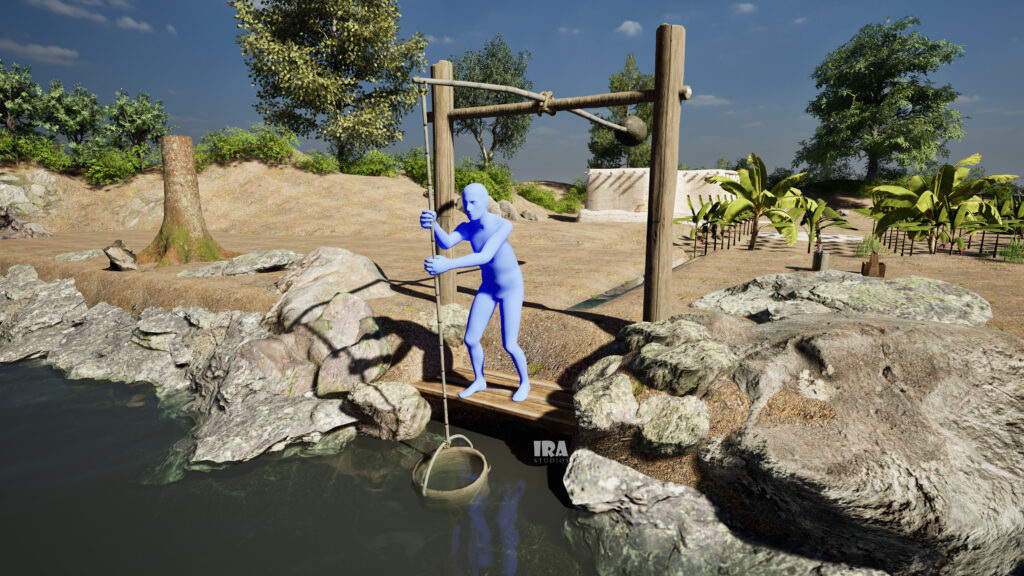
Why Was the Shadoof So Important?
In hot, dry regions, irrigation is the key to survival. Without tools like the Shadoof, it would have been almost impossible to grow food year-round.
This simple device allowed people to:
Water their crops regularly
Farm further away from rivers
Survive during dry seasons
Support growing populations
It was one of the first steps toward modern agriculture — and an invention that helped build civilizations.
Fun Fact!
A study of ancient drawings and artifacts shows that Shadoofs were used by single farmers or small groups, often working all day just to move enough water for their crops. It was hard work — but it worked!
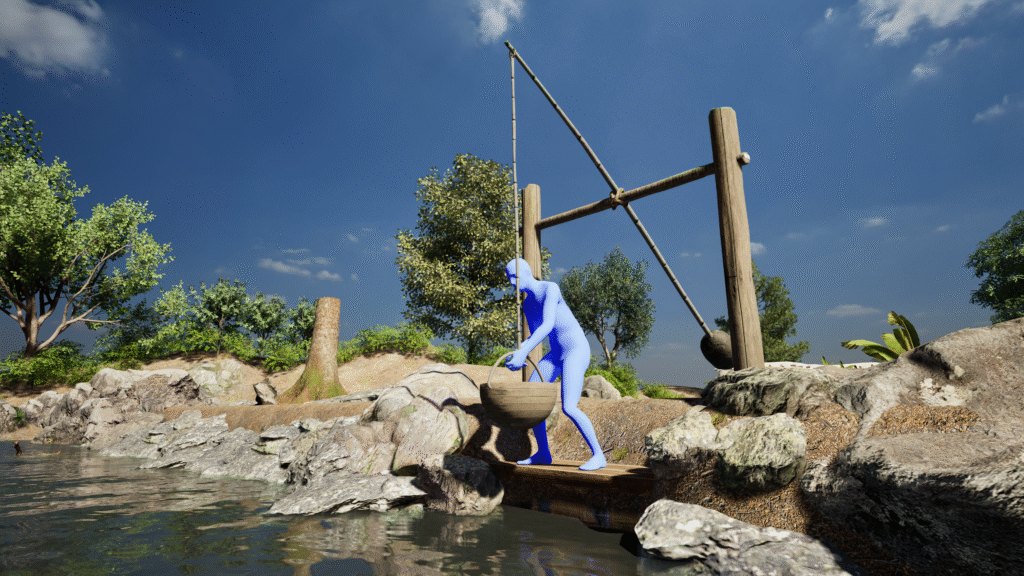
Conclusion
The Shadoof is a reminder that great inventions don’t always need complex parts. Sometimes, a wooden stick, a stone, and a bucket are enough to change the world.
It’s a story of human creativity, survival, and ingenuity — and it’s still inspiring today.
Want to learn more through visual storytelling? Check out our detailed 3D explanation blog on Treadwheel Crane: Ancient Engineering Marvel Explained with 3D Visuals
Helpful Link